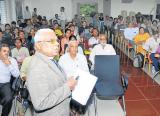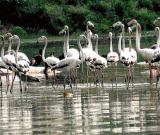Kundapur :
“Agarwood plantations is a profitable crop that can be grown without depending on workers. It can be grown as a main crop or in between other crops. Agarwood has huge demand in the international market and fetches more value than sandalwood,” said Vanadurgi Agarwood company’s technical advisor Dr V Bhaskar.
He was speaking during a meeting of Agarwood planters and a workshop on Agarwood, held at Kundapur Hangalur’s Anantapadmanabha Hall on August 13, 2013 under the joint aegis of the Vanadurgi Agarwood India and Bharatiya Kisan Sangha, Kundapur.
The Agarwood can be easily grown in between the crops of coffee, Betelnut, coconut, cardamom etc. as a mixed crop in malnad or aremalnad regions. Many farmers are interested in the crop and have already started growing it, he said.
The president of Bharatiya Kisan Sangha, B V Poojary inaugurated the programme. Vanadurgi agarwood industries chairman Surendrakumar Hegde, explained the importance of agarwood crop and said that with the participation of planters, the crop of agarwood has come out as a strong force in agriculture and business spheres.
Vanadurgi agarwood company’s technical advisor Srinivas, president of Kundapur land development bank and planter S Dinakar Shetty, agar planter Ramachandra Navada and organic agriculturist Ramachandra Alse were present.
Chief secretary of Bakisam, Venkatesh Hebbar welcomed the gathering. Vanadurgi agarwood company’s Thrimurthi gave a key note address saying that 180 – 200 people have already started agarwood plantations in Udupi and the farmers have responded well.
T P Vijay, conducted the programme. Santosh welcomed the gathering. More information was given with the help of a video projector. The technical officers of the company explained certain details to the questions raised by the planters.
source: http://www.daijiworld.com / Daiji World / Home> Karnataka / by Silvester D’Souza / Daijiworld Media Network – Kundapur (EP) / Wednesday, August 14th, 2013







